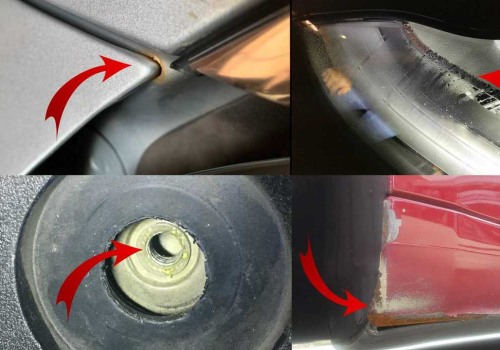If you’re like most car owners, you know how important it is to keep your vehicle in top condition. Regular maintenance is essential for keeping your vehicle running efficiently and safely. Replacing worn car parts is one of the most important components of regular maintenance. This repair guide will walk you through the steps of replacing worn car parts, so you can ensure your car continues to run smoothly. In this guide, we’ll cover why it’s important to replace worn car parts, how to identify worn parts, and the steps involved in replacing them.
We’ll also provide tips on how to save money on replacement parts and extend the life of your car. Replacing worn car parts is essential for the longevity and performance of your vehicle. When not addressed, small problems can quickly become major issues. Identifying worn parts is the first step in the process, and there are several signs to look for. You may notice unusual noises, decreased performance, or fluid leaks.
In addition, you can use diagnostic tools to check the condition of the parts. Once you’ve identified a worn part, it’s time to purchase the right replacement. The best place to start is by finding a compatible part for your make and model. You can purchase parts online or in-store, but be sure to check any warranties or guarantees associated with the purchase.
Lastly, you need to install the new part. It is important to take safety precautions when replacing car parts, and some installations may require special tools. If you need assistance, you can find helpful resources such as diagrams or video tutorials.
Identifying Worn Parts
- Unusual noises, decreased performance, or fluid leaks are all signs of a worn part. Diagnostic tools can be used to check the condition of the parts and help you determine what needs to be replaced.Purchasing Parts
- You should find a compatible part for your make and model and be sure to check any warranties or guarantees associated with the purchase.You can buy parts online or in-store.
Installation
- Take safety precautions when replacing car parts, and some installations may require special tools. If you need assistance, you can find helpful resources such as diagrams or video tutorials.Identifying Worn Parts
Identifying worn car parts can be tricky, and it's important to address these issues promptly before they become major problems. Some common signs of a worn part include a decrease in performance, loud noises from the engine, or leaking fluids. Additionally, diagnostic tools can help pinpoint the source of the issue and provide more detailed information about the condition of the part. There are a variety of diagnostic tools available on the market today that can help identify worn parts.Common tools include code readers, multimeters, and oscilloscopes. These tools can be used to monitor various sensors and check for any irregularities. Additionally, code readers can help detect any trouble codes that may indicate a worn part or malfunctioning system. It's important to take the time to properly identify worn parts in order to replace them with the right parts. Without proper diagnosis, you may end up replacing the wrong part or not addressing the issue altogether.
Taking the time to identify and address the issue will ensure that your car runs smoothly and safely for years to come.
Purchasing Replacement Parts
When replacing worn car parts, it is essential to purchase the right parts for your vehicle. The first step in purchasing replacement parts is to identify the part you need. This can be done by consulting your car's user manual, researching online, or speaking to an auto parts expert. Once you have identified the part, you can start looking at where to purchase it.You can purchase replacement parts either online or in-store. There are advantages and disadvantages to both options. Shopping online can provide more options and lower prices, but it may take longer to receive the part. Shopping in-store may be more convenient and faster, but it may be more expensive.
When purchasing replacement parts online, make sure you are buying from a reputable seller that offers a warranty or guarantee on the product. It is important to read the fine print and understand any return policies or shipping fees associated with the purchase. Additionally, make sure that the part you are purchasing is compatible with your vehicle. When shopping in-store, you can speak to knowledgeable staff who can help you find the right part for your car.
You should also ask about any warranties associated with the purchase, as well as any return policies in case the part does not fit properly or fails prematurely. Regardless of where you purchase your replacement parts, it is important to do your research and make sure you are buying the right part for your car. If done correctly, replacing worn car parts will ensure that your vehicle runs smoothly and efficiently.
Installing Replacement Parts
When replacing worn car parts, it is important to take the necessary precautions and use the right tools. This guide will provide a step-by-step explanation of how to replace a worn car part.Before getting started, make sure to read the instructions that come with the replacement part. This will help ensure that you install the part correctly and safely.
Step 1: Disconnect the Battery
Before doing any work on your car, it is important to disconnect the battery. This will help prevent any accidental electrocutions or fires.Step 2: Locate the Worn PartLocating the worn part can be tricky. If you are unsure of where it is located, consult your owner's manual or ask a mechanic for assistance.
Step 3: Remove the Worn Part
Once you have located the worn part, use the appropriate tools to remove it. Make sure to store all screws and bolts in a safe place so they don't get lost.Step 4: Install the Replacement PartOnce the worn part is removed, carefully install the replacement part. Make sure to follow any instructions provided with the new part.
Step 5: Test the Replacement Part
After installing the replacement part, test it to make sure it is functioning properly. If you have any doubts about its performance, consult a mechanic.Safety Precautions
When replacing a worn car part, safety should always be your top priority.Wear protective gear such as gloves, safety glasses, and a dust mask. Make sure to read all instructions carefully before starting any work on your vehicle. Replacing worn car parts is essential for ensuring your vehicle's performance and longevity. Properly identifying and replacing these parts is key to avoid major issues in the future. This guide has provided you with the steps and tools necessary to identify, purchase, and install the right parts for your car. Wear protective gear such as gloves, safety glasses, and a dust mask. Make sure to read all instructions carefully before starting any work on your vehicle. Replacing worn car parts is essential for ensuring your vehicle's performance and longevity. Properly identifying and replacing these parts is key to avoid major issues in the future. This guide has provided you with the steps and tools necessary to identify, purchase, and install the right parts for your car.
Identifying worn parts involves checking for unusual noises, vibrations, and other signs of wear. Purchasing replacement parts requires you to know the make, model, and year of your vehicle, as well as the exact part required. Installing replacement parts can be a bit tricky so it is important to consult diagrams or video tutorials for guidance. Overall, replacing worn car parts is an important step in keeping your vehicle running smoothly.
Be sure to follow these steps and utilize helpful resources in order to get the job done quickly and safely.







